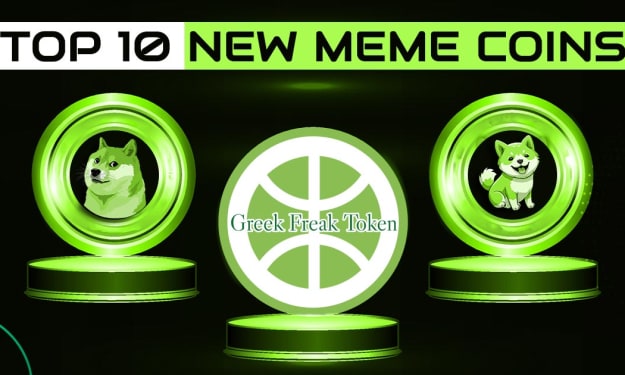Deploy a First-String P2P NFT Marketplace With the OpenSea Clone
NFT Marketplace Like Opensea - A Detailed Guide

An NFT marketplace that has been causing a revolution will be discussed in detail here, and you will have the opportunity to learn more about it. If you are a fan of non-fungible tokens (NFTs) and pay attention to the news that emerges concerning them, then you must also be familiar with the expansion of OpenSea.
According to the statistics provided by DappRadar for the preceding week, the volume of sales of NFTs on OpenSea has reached $523.51 million. Alright! In the following sections of this blog, I will provide you with some insights into the creation of the OpenSea clone.
OpenSea Was One Of The First NFT Marketplace Pioneers.
The level of notoriety that digital collectibles, sometimes known as NFTs, have attained in modern times is something that is common knowledge. The breadth of the NFT marketplace is expanding as a result of the increasing number of content creators who are bringing their works to the platform to expose them.
OpenSea was the first NFT marketplace, and its presence is credited as being one of the primary contributors to the general public’s growing awareness of the practice of trading digital collectibles. OpenSea is the very first P2P decentralized platform, and it is also one of the largest platforms to have been developed to this day. It was released in 2017.
This peer-to-peer platform supports a wide variety of digital treasures, including video games, trading cards, memes, GIFs, films, and music, among other media types. To create an NFT marketplace on the same level as this one, numerous hours must be spent on planning and development.
What Kind of Plans Does OpenSea Have?
OpenSea is currently contending with intense levels of competition as a result of the proliferation of new NFT marketplaces that appear on an almost daily basis. However, by continually incorporating improvements, this platform can maintain its position at the forefront of the industry.
The platform has its headquarters in the United States at the moment, but it has plans to expand its operations to several other countries. The platform has, in particular, doing away with the gas taxes, which is one of the things that has contributed to its success in attracting more artists.
Find out everything you need to know about gas prices by reading this article. In the past, non-fungible token (NFT) exchanges that were powered by the widely used Ethereum blockchain required a significant amount of electricity to complete trades. Users were required to pay the gas fee using ETH, which is the standard coin for Ethereum.
The Ethereum network has recently transitioned away from the Proof-Of-Work (POW) mechanism and toward the Proof-Of-Stake (POS) mechanism, which uses significantly less electricity. As a result, to make way for environmentally-friendly practices and to attract a greater number of users, OpenSea has eliminated the gas taxes, which were previously a source of concern for consumers.
Other essential goals include permitting customers to use any cryptocurrency wallet of their choosing and offering payment choices that accept credit cards.
All You Need to Know About OpenSea’s $100 Million in Funding
Even if the platform has been fast gaining popularity, it still needs to improve both the functionality and, of course, the way that it makes the user feel in general.
Andreessen Horowitz, a venture capitalist, led OpenSea’s Series B investment round in July 2021, which resulted in the company receiving one hundred million United States dollars. Several prominent venture capitalists, including Michael Ovitz, Kevin Durant, Ashton Kutcher, and Creative Artists Agency, took part in the fundraising round (CAA).
OpenSea intends to lower transaction costs while also increasing the scalability of the platform with the help of this finance. In addition to that, there are plans in place to incorporate brand-new features into the platform.
The OpenSea Platform and Its Most Notable Functions
Storefront
Users are provided with extensive information regarding the digital items that are currently for sale at the marketplace. The details include ownership, price, auctions, bids, and other relevant information. Simply said, you can think of a storefront as a rack that shows off all of the different products that are sold in the business. Got it?
Lookup and filtration tools
Buyers and sellers of digital collectibles should be able to input the category or name of the item to find the information they need.
Digital wallet
Your users will have an easier time receiving or transferring digital treasures if the digital wallet component is implemented.
Bidding
Auctions will be how users of the platform can purchase the digital collectibles available there. At that time, prospective purchasers can demonstrate their interest by taking part in auctions and placing bids on the digital treasures that most appeal to them.
What Kinds of Things Does OpenSea Sell That Bring in Money?
It is necessary for you, as a developer of an NFT marketplace, to be familiar with the many sources of revenue. Let us slide down!
Fees for auctions
As was stated previously, auctions are where digital collectibles that may be bought and sold take place. Both buyers and sellers are required to pay the platform fees associated with the auction to take part in the event.
Bidding fees
In addition to the expenses associated with the auction itself, purchasers who are interested in placing bids on collectibles are required by the platform to pay the bidding charges.
Cost of production
In general, minting fees are demanded from NFT developers by every platform that supports NFTs. But in OpenSea it is different. Only if their digital collectibles are sold after being listed on the site are the creators required to pay the minting fees for those collectibles. However, those who are making their first purchase will be required to pay a one-time gas fee.
Fees for listing a property
Just a moment ago, we were talking about the function of the storefront feature. Listing refers to the process of displaying a list of digital items on the marketplace. The fees for such a listing are required to be paid by the creators or sellers of the item.
Costs of transactions
Let’s say a buyer and a seller on the platform have reached an agreement for the buyer to purchase an NFT from the seller. The NFT will now be transferred to the buyer after this process is complete. Transaction fees, which make up a relatively insignificant proportion of the overall value of the NFT, are levied on this type of transaction.
How Might One Establish an NFT Marketplace Comparable to OpenSea?
The most practical approach to creating an NFT marketplace similar to OpenSea is to modify an OpenSea Clone that is fully customizable. If you invest in a secure feature-rich OpenSea platform like NFT Marketplace, you will have the ability to deploy an NFT marketplace in a shorter amount of time.
Conclusions
Therefore, if you create an NFT marketplace similar to OpenSea, you may flood your users with tempting perks such as reduced transaction costs, many payment alternatives, integration of digital wallets, and so on. When you implement a platform that is comparable to OpenSea, you will, of course, receive a variety of revenue streams as a result. Take advantage of this opportunity right away!
About the Creator
Angelika Candie
Blockchain Analyst & Technical Content Writer






Comments
There are no comments for this story
Be the first to respond and start the conversation.